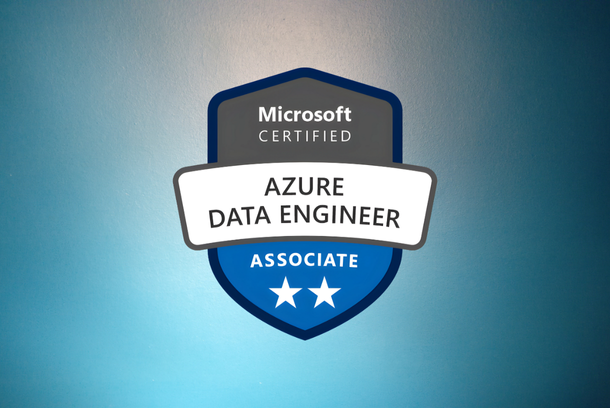Introduction to Azure Data Engineering: Key Concepts and Tools
Introduction
The modern data-driven market requires businesses to use data engineering to process substantial datasets in an effective and efficient manner. Azure Data Engineering operates as a scalable reliable cloud environment which helps users create data pipelines for transforming raw data and running analytics.
The data engineering collection from Microsoft Azure comprises comprehensive tools alongside services which assist engineers through all stages of creating and upkeeping stable data solutions. A review of critical Azure Data Engineering elements and indispensable resources, together with established methods for success is provided in this blog.
What is Azure Data Engineering?
The Azure data engineering service supports data collection and data transformation operations and storage implementation by using cloud-based technology platforms. Through this framework organizations can handle various complex datasets and protect their dependable business expansion.
Organizations can perform smooth data workflow deployments because Azure provides a managed infrastructure system that data engineers can utilize. Real-time analytics becomes possible through business optimization of data processing pipelines powered by Azure services to improve decision-making abilities.
Key Concepts in Azure Data Engineering
1. Data Storage and Management
Data engineering starts by arranging and scaling data storage systems as a first step. Azure delivers various storage solutions that match distinct data formats together with application scenarios.
- Azure Blob Storage: The solution provides storage for big amounts of unstructured content including images, videos and logs at reasonable prices and adaptable capacity.
- Azure Data Lake Storage (ADLS): ADLS operates as a big data analytics platform which offers hierarchical storage capabilities while it integrates naturally with Azure Databricks alongside Synapse Analytics.
- Azure SQL Database: Amazon Relational Database Service provides a complete relational database platform which specializes in delivering high-performance transactional operations.
- Cosmos DB: This globally distributed NoSQL system operates with real-time low-latency to support applications.
2. Data Processing and Transformation
Data storage immediately requires processing methods to produce usable information. Azure delivers advanced technologies that enable users to process both batches and real-time datasets.
- Azure Data Factory: An ETL (Extract Transform Load) service in the cloud enables users to move and orchestrate data from different sources. This platform enables automated workflow management to combine data from different system platforms.
- Azure Databricks: The big data analytics platform utilizes optimized Apache Spark as its base to handle processing and analysis for machine learning operations and real-time data operations with data transformation capabilities.
- Azure Synapse Analytics: The data warehouse and analytics service was built for doing business intelligence and high-speed queries.
3. Real-Time Data Streaming
Multiple organizations conduct real-time data processing to run applications that discover fraud and maintain equipment and generate customer insights. Azure offers dedicated services which manage real-time data streaming operations.
- Azure Stream Analytics: The real-time analytics system functions as a serverless service that operates on data obtained from IoT devices and logs along with social media streams.
- Azure Event Hubs: The event ingestion service operates at large scale for big data streaming to support processing millions of events per second.
- Azure Kafka on HDInsight: The event streaming platform operates on distributed architecture for processing massive streaming data collections.
4. Data Orchestration and Workflow Automation
The process of data engineering demands scheduling automation to enhance data workflow efficiency. The Azure platform contains management tools that simplify the complex organization of multi-stage data processing workflows.
- Azure Data Factory: Engineers use the software for automating workflows and managing data pipeline activities including task scheduling and process monitoring.
- Azure Logic Apps: The system provides automation capabilities through its ability to merge Azure services with external applications.
- Azure Functions: This service gives engineers code execution capabilities while eliminating infrastructure administration requirements.
5. Security and Compliance
Azure Data Engineering relies on data security as its fundamental operational component. Security measures from Azure protect stored data as well as data during transmission.
- Azure Active Directory (AAD): A cloud-based identity and access management service for controlling user authentication and permissions.
- Azure Key Vault: Helps manage encryption keys and credentials, ensuring secure access to sensitive data.
- Azure Defender for SQL: Provides threat protection and vulnerability assessment for Azure SQL databases.
- Compliance and Governance: Azure offers compliance certifications (e.g., GDPR, HIPAA) and tools like Azure Policy to enforce security policies.
Best Practices for Azure Data Engineering
To build efficient and scalable data solutions in Azure, organizations should follow best practices that optimize performance, cost, and security.
Choose the right storage solution
- Use Azure Data Lake Storage for big data workloads and Azure Blob Storage for unstructured data.
- Select Azure SQL Database or Cosmos DB based on application needs.
Optimize data processing workflows
- Use Azure Data Factory for ETL automation and Azure Databricks for big data analytics.
- Implement parallel data processing to reduce latency and improve performance.
Leverage real-time data processing
- Utilize Azure Stream Analytics and Event Hubs for real-time insights.
- Integrate Kafka on HDInsight for event-driven applications.
Implement strong security measures
- Apply role-based access control (RBAC) using Azure Active Directory.
- Encrypt sensitive data with Azure Key Vault.
Monitor and optimize costs
- Use Azure Cost Management to track and optimize resource usage.
- Configure auto-scaling for services like Azure Synapse Analytics to handle varying workloads efficiently.
Conclusion
Organizations can process large datasets and conduct analytics through powerful tools and cloud-based solutions that Azure Data Engineering delivers to businesses. Organizations use Azure services in a courteous manner to process their data effectively for instant decision-making based on improved business understanding.
Data engineers constructing secure data solutions using essential principles and operational methods and required tools can achieve financial effectiveness at scale for business success across current data domains.
- 🚀Enroll Now: https://www.accentfuture.com/enquiry-form/
- 📞Call Us: +91-9640001789
- 📧Email Us: contact@accentfuture.com
- 🌍Visit Us: AccentFuture
best databricks online course , databricks course , databricks online course , databricks online course training , databricks online training , databricks training , databricks training course , learn databricks



Comments
Post a Comment